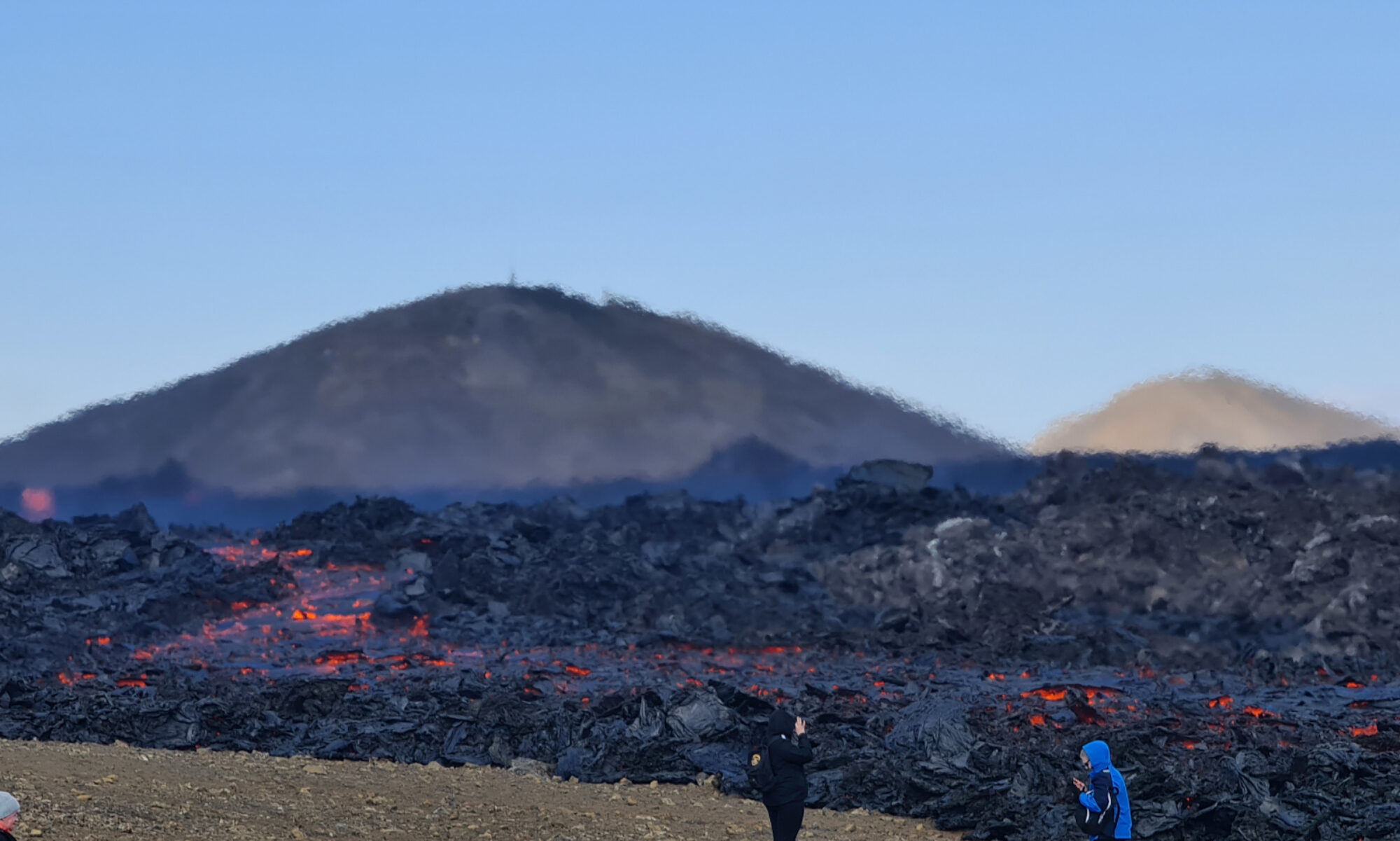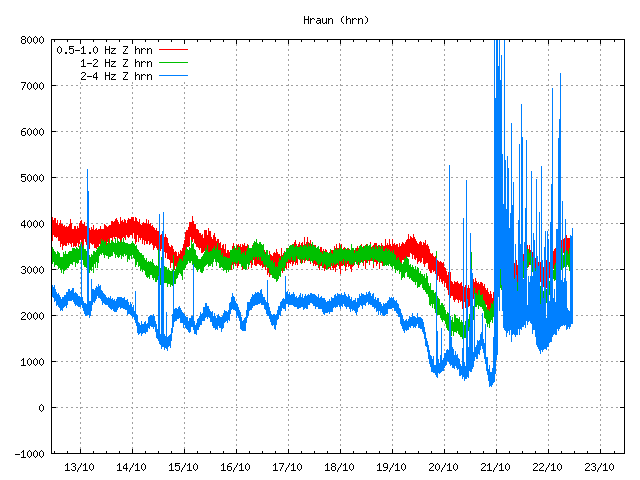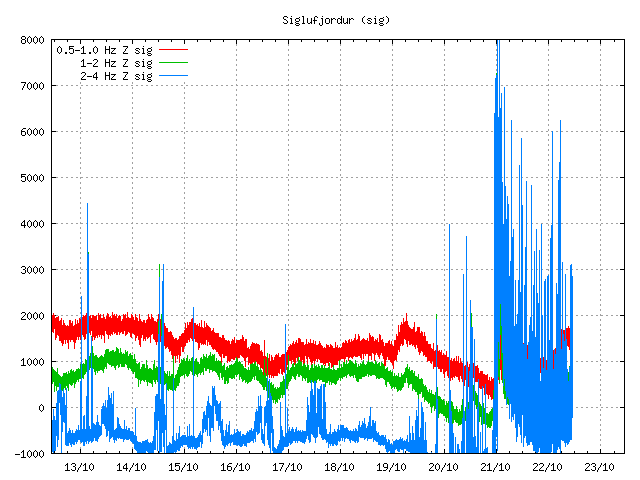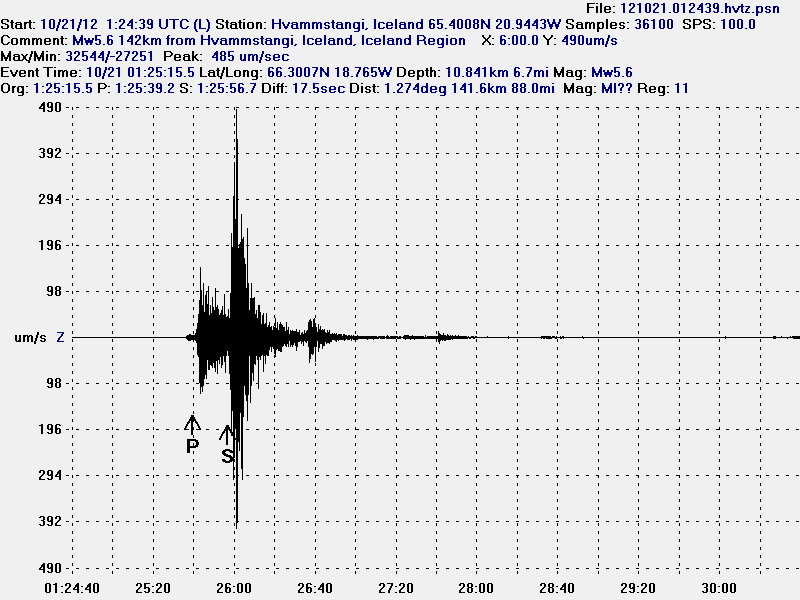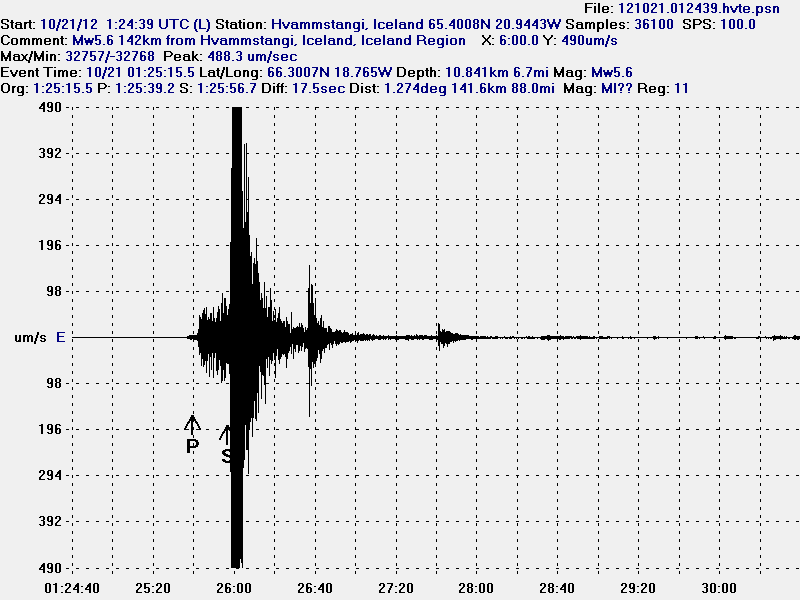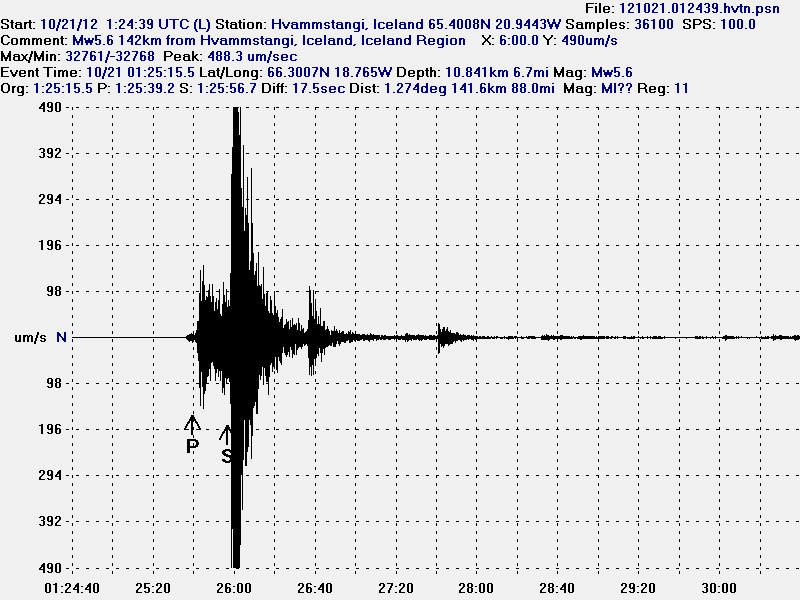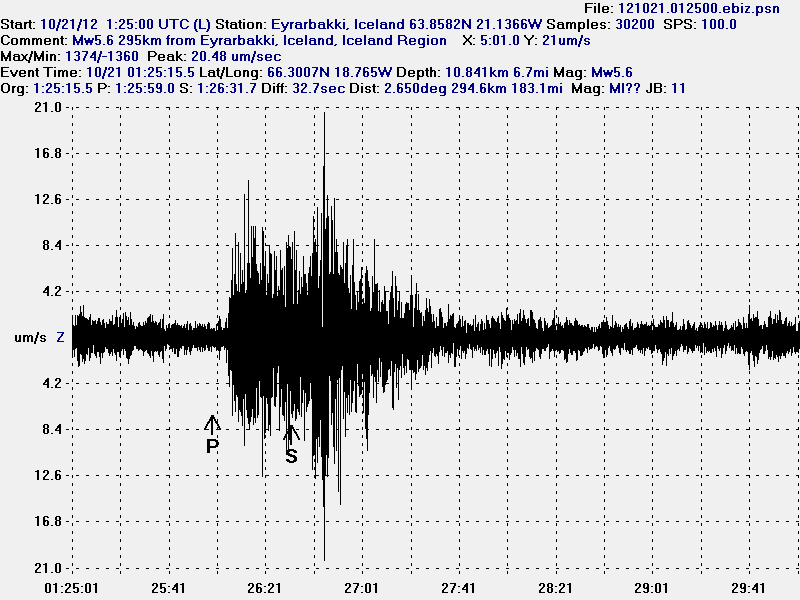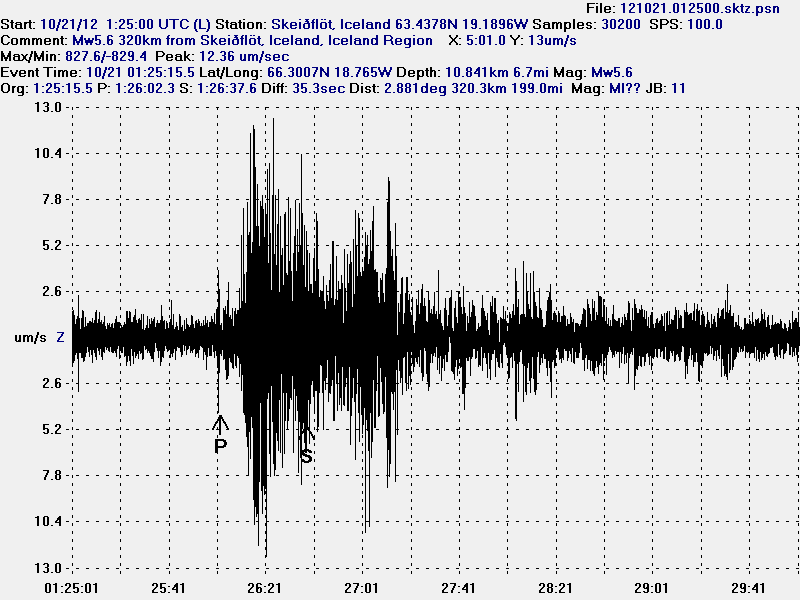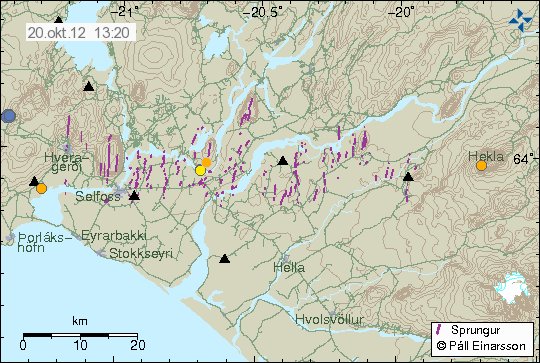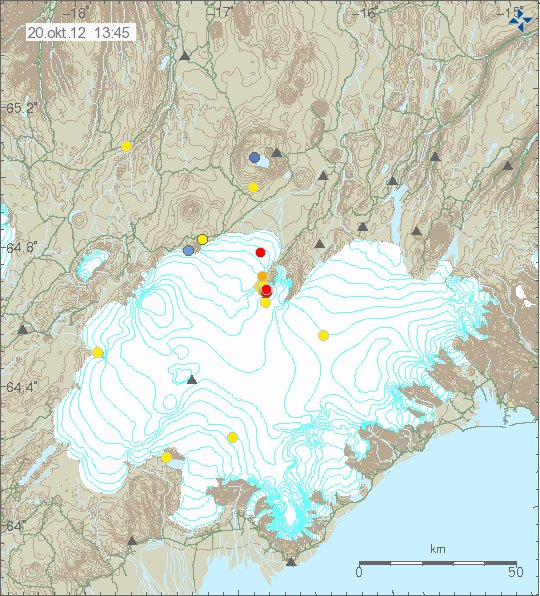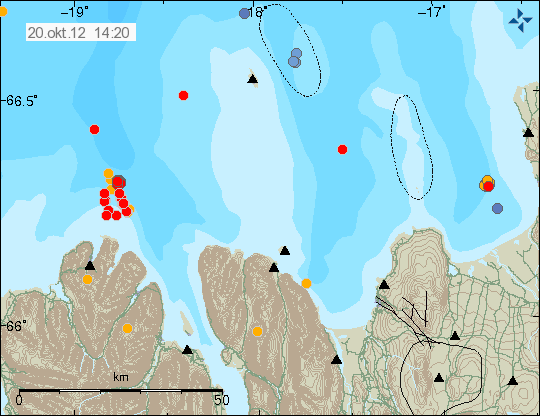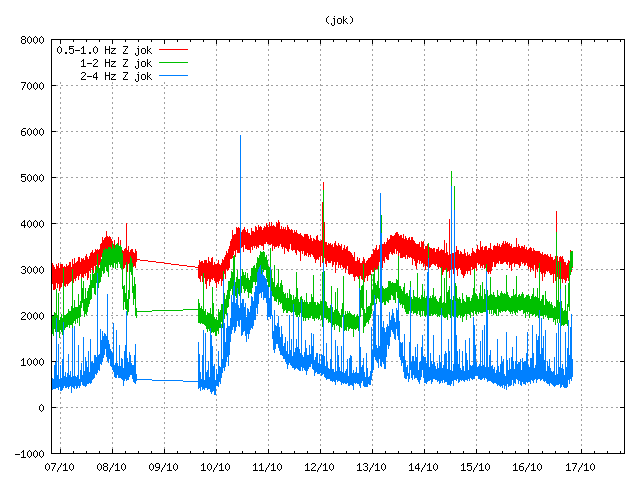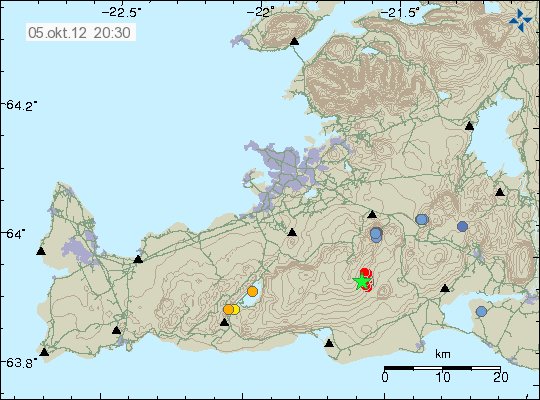This is short TFZ earthquake swarm update at 11:36 UTC. The strongest earthquake so far was a magnitude Mb5.2. It has been followed by many earthquakes that are 3.0 to 4.8 in magnitude. Number of earthquakes that are below that magnitude is around 300 to 350. But this number is updating constantly so it is going to be outdated once this blog post is up.

The earthquake area today at 11:25 UTC. The green stars show earthquakes that are above ML3.0 in magnitude. Copyright of this image belongs to Icelandic Meteorological Office.

The tracker showing how dense this earthquake swarm was at times. Copyright of this image belongs to Icelandic Meteorological Office.
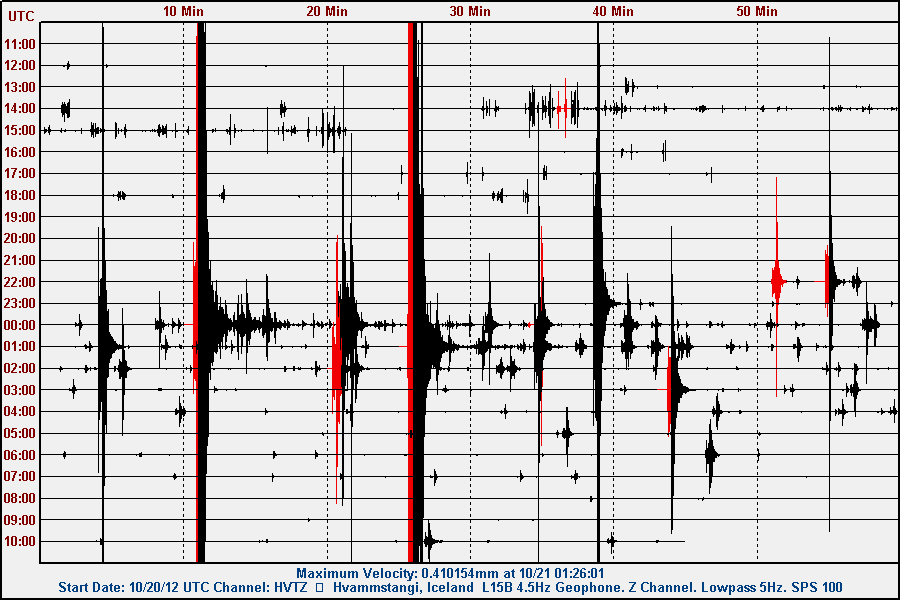
The earthquake swarm on Hvammstangi geophone station. This image is released under Creative Commons licence. See licence page for more details.
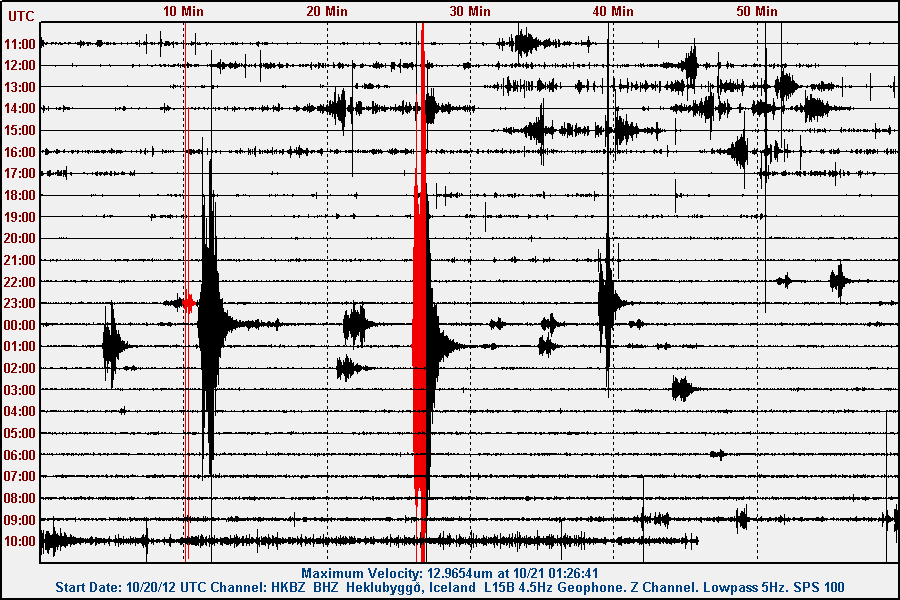
The earthquake swarm on Heklubyggð geophone station. This image is released under Creative Commons licence. See licence page for more details.
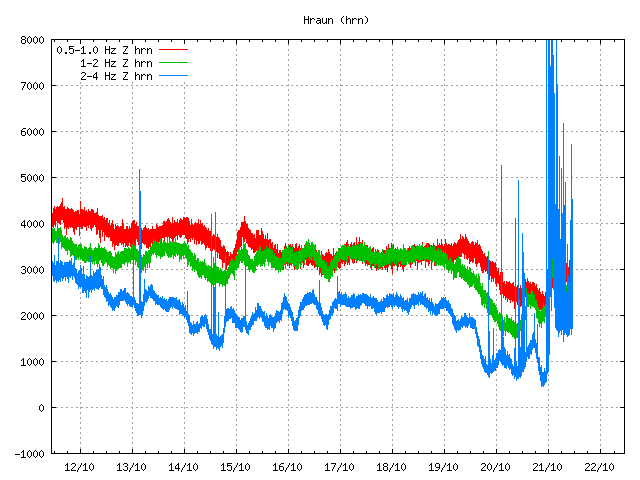
The tremor plot at Hraun á Skaga showing this earthquake swarm clearly. Copyright of this image belongs to Icelandic Meteorological Office.
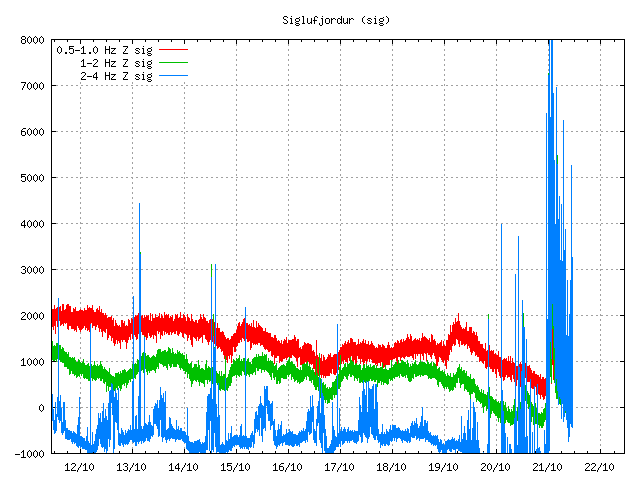
The tremor plot at Siglufjöður. This SIL station is closest to the earthquake swarm. Copyright of this image belongs to Icelandic Meteorological Office.
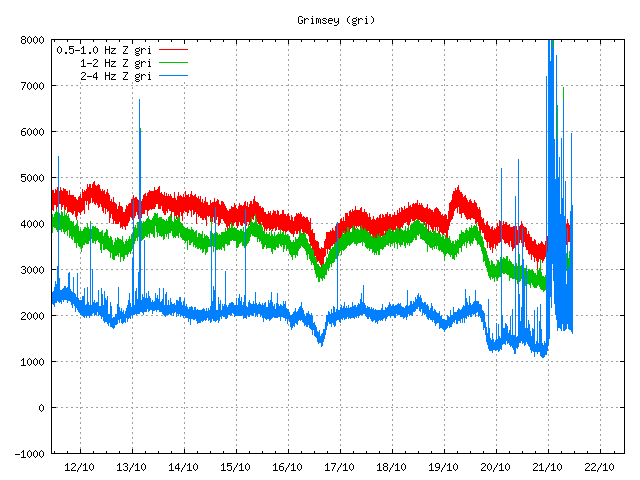
The tremor plot in Grímsey Island. This tremor plot is showing the earthquake swarm clearly. Copyright of this image belongs to Icelandic Meteorological Office.
This earthquake swarm is not over at current time. But earthquake activity has dropped something for the moment.That might change at any time. Since this earthquake swarm does not show any signs of being over at the moment. There is no risk of volcano activity in this area following this earthquake swarm. Since there are no volcanoes in this area of Iceland. This earthquakes are strike-fault earthquakes. I am going to post more updates on this earthquake activity during the day, or when something major happens in this area.
This earthquake swarm has been felt in Siglufjöður town. The largest earthquake was felt over most of north Iceland. Some minor damage has been reported following that earthquake.
Blog post updated at 11:54 UTC on 21.10.2012. Added images that I forgot to add the first time around.

